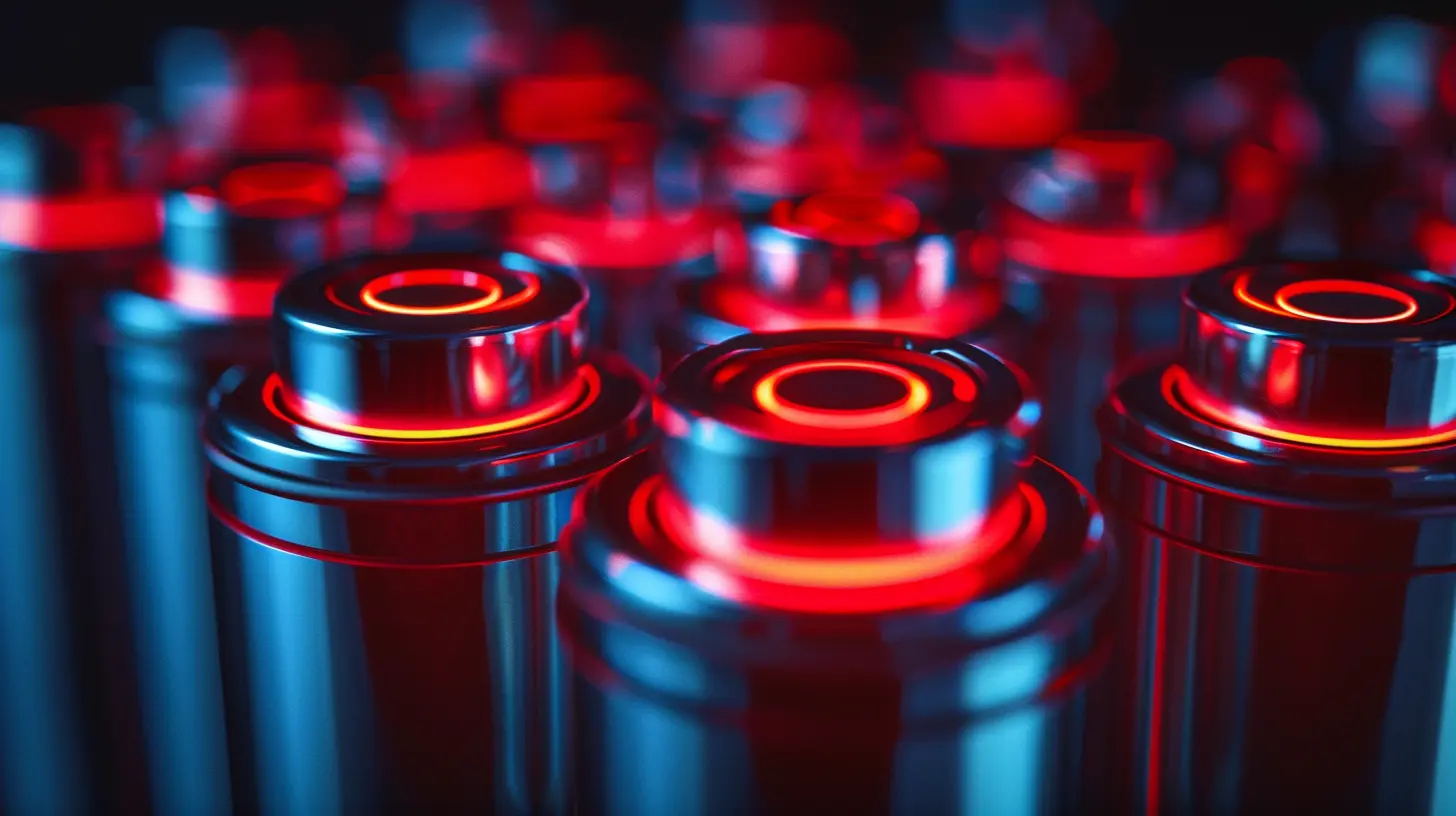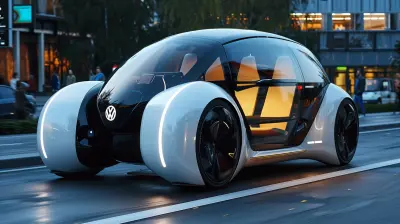Exploring the Impact of Battery Technology on Renewable Energy
25 November 2025
So, here’s the thing: Renewable energy is kind of like a rockstar that can’t play a full concert yet. It’s clean, it’s green, and it’s saving the planet from burning up like a forgotten pizza in the oven. But there's one big problem — it's not always “on.” The sun doesn’t shine at night, and sometimes the wind takes a day off. That’s where battery technology struts onto the stage.
Think of batteries as the unsung hero sidekick to renewables. They may not get all the attention, but without them, solar panels and wind turbines can’t live up to their full potential. In this post, we’re going to break down how advancements in battery tech are dramatically changing the renewable energy game.

Why Batteries and Renewables Go Hand-In-Hand
Picture this: You’ve got solar panels on your roof, soaking up the sun all day. Come nighttime, your house still needs power, but guess what? The sun’s gone — and unless you have a battery bank, so is your electricity.Renewable energy is intermittent by nature. It’s not reliable 24/7, and that’s a massive issue. Batteries solve this by storing energy during peak production and releasing it when production drops. It’s like saving leftovers in the fridge — eat when you’re hungry, not when the food’s hot.
Without effective energy storage, renewable energy just isn’t enough to power the grid consistently. That's the hard truth.

The Evolution of Battery Technology
Let’s roll the clock back a bit. Traditional batteries — think lead-acid and nickel-cadmium — had their time, but they weren’t exactly built for the heavy lifting the energy grid requires now. Then, boom, lithium-ion batteries entered the game. Lighter, longer-lasting, and faster to charge, they’re the current poster child for energy storage.But even lithium-ion tech has its limits. For large-scale grid storage or consistent home power, we need even better solutions — safer, more sustainable, and more efficient batteries.
Here's a quick rundown of where battery tech is heading:
1. Lithium-Ion Batteries – The Current Leaders
You’re probably already carrying one of these around in your phone. Lithium-ion batteries dominate the market because they’re compact, efficient, and relatively affordable. They’ve also made solar power more practical by giving homeowners the ability to store their own power.But here’s the catch: lithium is a finite resource, and mining it has environmental challenges of its own. So while lithium-ion is a great stepping stone, it can't be the end game.
2. Solid-State Batteries – The Rising Star
Solid-state batteries replace the liquid electrolyte with a solid one. Sounds simple, but it’s a game-changer. They’re safer (no leakage or explosions), more energy-dense, and last longer. That means more power, smaller storage systems, and fewer replacements.Still, solid-state batteries are expensive and tough to manufacture at scale — but companies like Toyota and QuantumScape are betting big on cracking that code.
3. Flow Batteries – Perfect for Grid-Scale Storage
Ever heard of vanadium redox flow batteries? Probably not, but they’re kind of a big deal in the energy world. These beasts store energy in tanks and are ideal for large-scale storage because they can cycle endlessly without degrading much.They're bulky, sure, but they’re durable and scalable — exactly what utilities need.
4. Sodium-Ion Batteries – The Affordable Alternative
Lithium is pricey. Sodium, on the other hand, is cheap and everywhere (hello, table salt). Sodium-ion batteries are emerging as a budget-friendly alternative, particularly for regions lacking access to lithium resources.They aren’t as energy-dense yet, but for certain use cases, they’ll definitely do the job.

Real-World Impact: What’s Happening Right Now?
Batteries aren’t just a cool concept anymore — they’re already transforming how we generate and consume power. Let's chew on some examples:Tesla’s Energy Storage Solutions
Tesla’s Powerwall and Megapack are essentially giant battery packs for homes and grid-scale energy storage. When paired with solar panels, they let users store excess solar energy and use it when the sun isn’t shining. That means backup power during outages, reduced reliance on the grid, and — let’s be honest — a pretty futuristic feel.Australia’s Big Battery
Remember South Australia’s massive blackout in 2016? It was a disaster — until Elon Musk made a Twitter bet and ended up building one of the world’s biggest battery storage projects. The Hornsdale Power Reserve (aka "Tesla Big Battery") has since proven to be a cost-saving, blackout-busting miracle that’s inspired similar projects globally.Off-Grid Villages in Africa and India
In many rural parts of the world, the grid isn’t even a thing. Solar panels paired with battery storage are lighting up villages for the first time — powering fridges, phones, and schools without diesel generators. That’s not just energy; that’s empowerment.
How Better Batteries Empower Renewables
Okay, so we’ve talked tech. Now let’s talk impact. How do better batteries actually help renewable energy take off?1. Improved Grid Reliability
When renewables are paired with batteries, energy becomes dispatchable, meaning it can be sent out on demand. That makes the grid more stable and reliable. No more blackouts when the sun sets or clouds roll in.2. Lower Energy Costs
Storing energy during low-demand (and low-cost) periods, and using it during peak-demand (and expensive) times, helps save big bucks. This isn't just for homeowners; utilities and businesses benefit too.3. Energy Independence
With batteries, homes and businesses can go semi- or fully off-grid. That means less reliance on centralized power plants, fewer emissions, and way fewer utility bills. Plus, it’s kind of badass to generate your own power and not owe a dime to Big Energy.4. Boosting Remote Access
For communities in remote or disaster-prone areas, battery-backed renewables are lifesavers — literally. They provide light, communication, refrigeration, and medical support where traditional power lines can't reach.The Environmental Side of Battery Tech
Here’s the sticky part: batteries aren’t exactly squeaky clean. Mining materials like lithium, cobalt, and nickel can be rough on the environment and often involves questionable labor practices. So yes, batteries enable green energy — but they come with their own environmental footprint.But here’s the good news:
- We’re getting better at recycling batteries. Companies are working on "closed-loop" systems to reuse precious materials.
- Alternatives like sodium-ion or solid-state could reduce reliance on rare minerals.
- Scientists are even experimenting with organic and saltwater batteries. (Yes, literal saltwater!)
It’s a work in progress, but awareness is growing and the innovations keep rolling in.
What the Future Holds
Let’s fast-forward 10 years. What could we see?- Homes powered completely by clean energy stored in sleek wall-mounted batteries.
- Entire cities running on microgrids supported by flow batteries and solar arrays.
- Cars that not only drive electric but double as battery backups for your house.
- And maybe — just maybe — a global energy system that doesn’t depend on burning stuff to stay lit.
The tech is moving fast, and big money is pouring into battery research. That means quicker breakthroughs, cheaper solutions, and wider adoption.
Should You Invest in Battery Storage Now?
Honestly, it depends. If you’ve already got solar panels, adding a home battery can make a ton of sense. It’ll reduce your grid dependence, save money in the long run, and keep the lights on during outages.Costs are still a bit high, but incentives and rebates are available in many places. Plus, as demand grows, prices will drop — just like they did with solar panels over the past decade.
You don’t have to go full Tony Stark — even a small battery setup can make a big difference.
Final Thoughts
Battery technology isn’t just a sidekick to renewable energy — it’s the glue that makes the entire system stick. Without it, clean energy hits a wall. With it, we're talking about a world where everyone, everywhere, can access reliable, sustainable power.Sure, there are hurdles. Environmental concerns, high costs, and tech limitations are all real. But the progress is undeniable. Every year, batteries get better, cheaper, and more accessible — and that means a future where solar panels, wind farms, and storage systems work together in perfect harmony.
If renewable energy is the heartbeat of a green future, battery storage is the pulse that keeps it steady.
all images in this post were generated using AI tools
Category:
Battery TechnologyAuthor:

John Peterson

